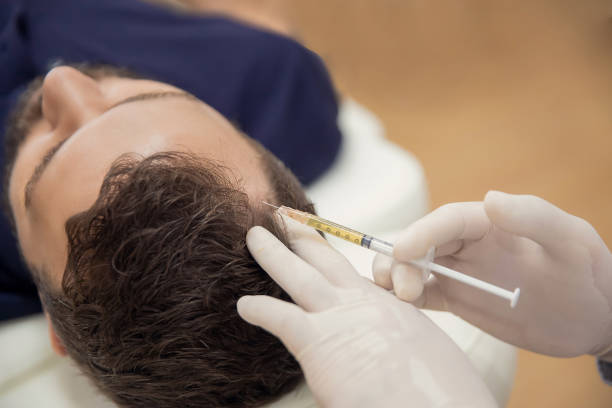Introduction to PRP Hair Treatment
Platelet-Rich Plasma – PRP hair treatment is a revolutionary procedure that harnesses the body’s natural regenerative capabilities to combat hair loss. Essentially, PRP hair therapy requires taking a minor amount of the patient’s blood, refining it to enrich the platelets, and administering this dense mixture into scalp sections experiencing hair loss or thinning.
The foundational idea behind PRP is that the increased concentration of platelets provides a rich source of growth factors. These growth factors are pivotal in cell proliferation, differentiation, and angiogenesis, all critical processes in hair regrowth.
The Rise in Popularity of PRP for Hair Loss
Over the past decade, PRP has emerged as a sought-after solution for hair restoration. Several factors contribute to its rising popularity. First, PRP is a minimally invasive procedure so that patients can avoid the potential complications and downtime associated with surgical interventions. Moreover, because the therapy utilizes the patient’s blood, the likelihood of allergic responses or negative side effects is considerably diminished. The combination of these factors and promising results observed in many patients has propelled PRP to the forefront of hair loss treatments.
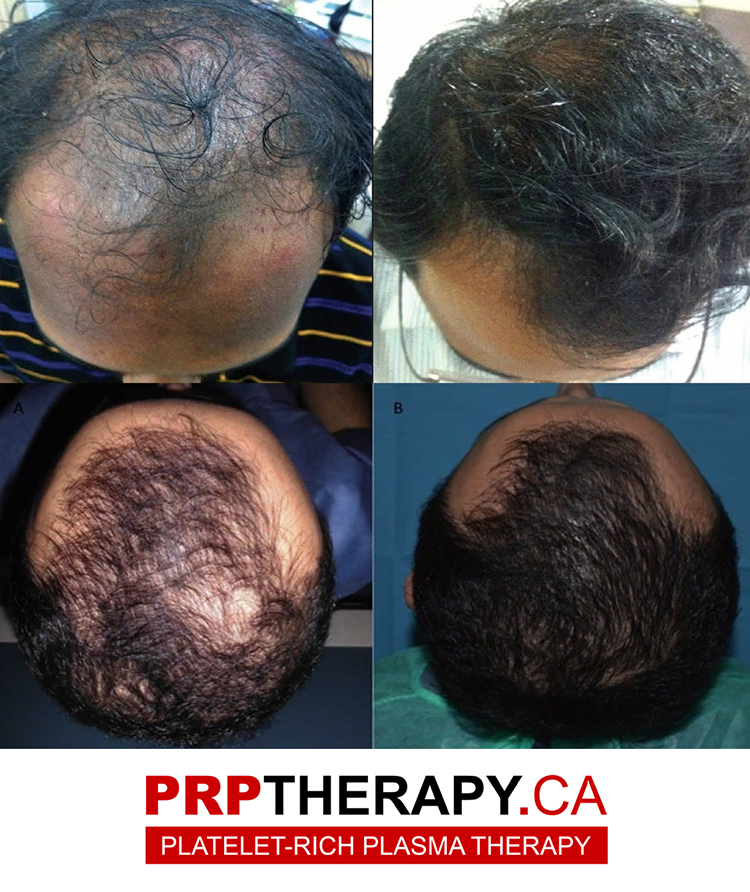
The Science Behind PRP Hair Treatment
The Role of Platelets in Hair Growth
Platelets are a component of blood primarily known for their role in clotting. Nonetheless, they produce a range of growth factors like Platelet-Derived Growth Factor (PDGF), Transforming Growth Factor (TGF), and Vascular Endothelial Growth Factor (VEGF). These factors are essential in wound healing and tissue regeneration processes. In hair growth, they stimulate the hair follicle cells, invigorating dormant follicles and promoting the active growth phase.
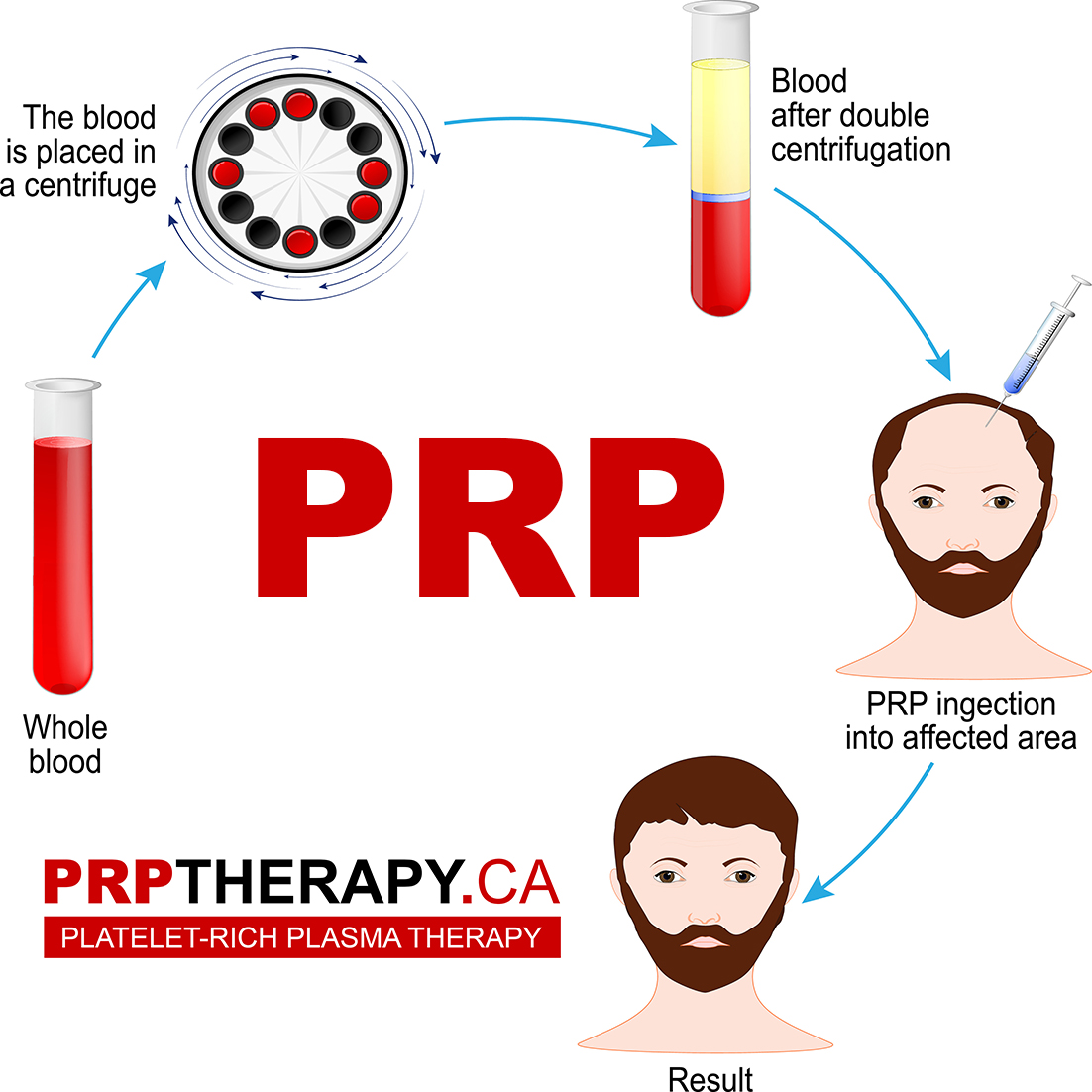
How PRP Hair Treatment Targets Hair Follicles
When PRP is injected into the scalp’s target areas, the high concentration of growth factors works on the hair follicles. These factors increase blood flow to the hair follicles, nourishing and enlarging them. Over time, this can lead to thicker, fuller hair strands. Moreover, by rejuvenating dormant follicles, PRP can stimulate the growth of new hairs in areas where hair is thinning.
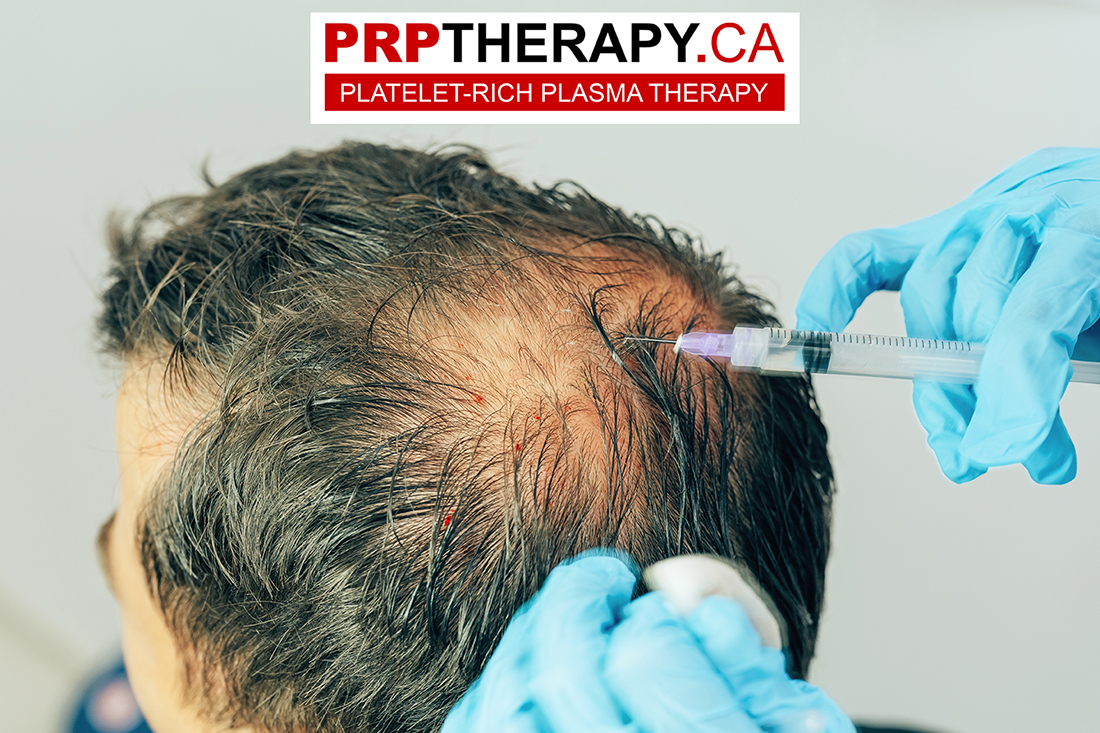
Clinical Evidence Supporting PRP's Efficacy for Hair Regrowth
A growing body of clinical studies supports the effectiveness of PRP in treating hair loss. Research has consistently shown that patients undergoing PRP treatment often experience increased hair density and thickness. One study found that PRP significantly increased hair regrowth compared to placebo, with a notable improvement in hair root strength, ensuring the longevity and health of the hair.
The PRP Hair Treatment Procedure
Initial Consultation: Determining Candidacy
Before delving into the PRP hair treatment process, it’s paramount for prospective patients to undergo an initial consultation with a qualified medical professional. This consultation serves multiple purposes. Firstly, it’s an opportunity for the doctor to assess the extent of the hair loss and understand the potential underlying causes. From this assessment, the physician can ascertain if the patient is suitable for PRP treatment.
Factors such as the patient’s age, the pattern and stage of hair loss, overall health, and any medical conditions or medications are considered. Patients with certain autoimmune diseases, skin conditions or those on specific medications might be advised to opt for alternative treatments. Moreover, the consultation provides a platform for patients to voice their concerns, ask questions, and set realistic expectations.
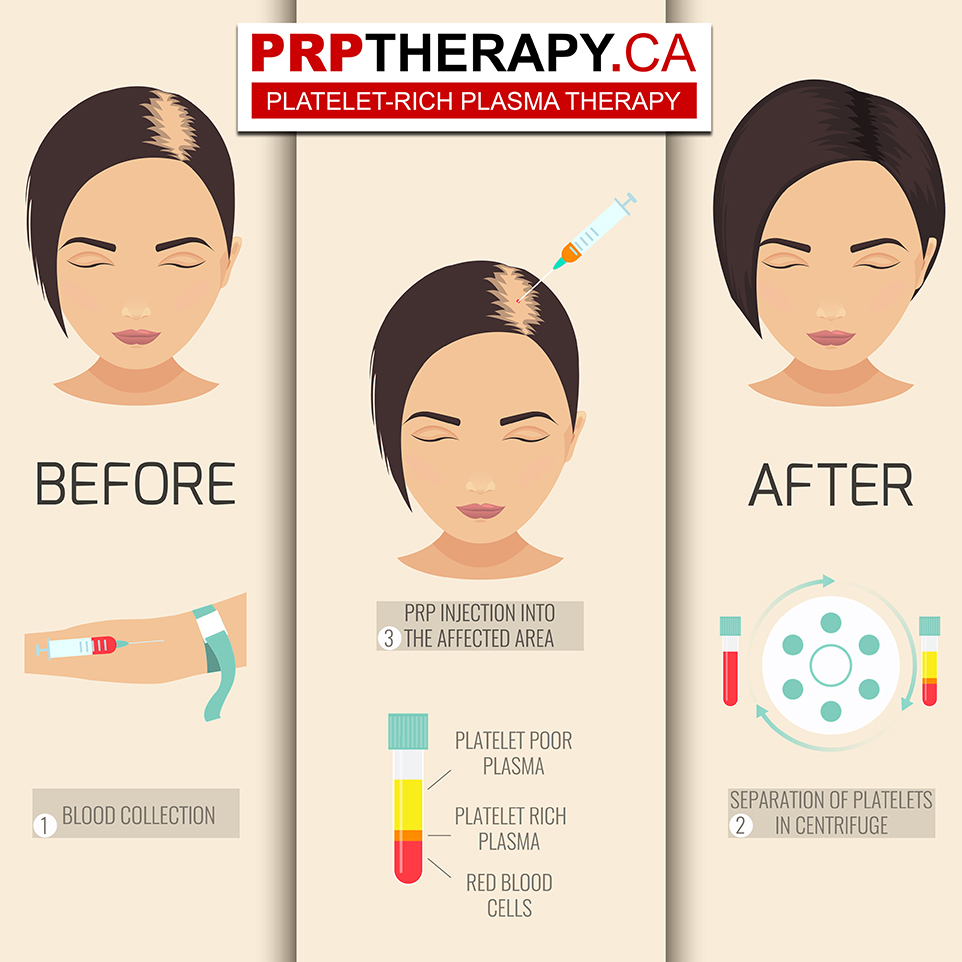
Step-by-Step: From Blood Extraction to Scalp Injection
The PRP treatment procedure, though relatively straightforward, involves meticulous precision. Here’s a breakdown of the process:
- Blood Extraction: The procedure commences with drawing a small volume of the patient’s blood, typically from the arm. This amount is usually similar to what one would provide during a routine blood test.
- Processing the Blood: The taken blood is subjected to a high-speed centrifuge, which divides the blood constituents according to their weight. After several minutes, the platelets are concentrated in a portion of the plasma, resulting in the desired Platelet-Rich Plasma.
- Preparation for Injection: The area of the scalp targeted for treatment is cleaned and sometimes numbed with a local anesthetic to enhance patient comfort during the procedure.
- PRP Injection: Utilizing a fine needle, the PRP is meticulously injected into multiple sites across the scalp, focusing primarily on the regions showing hair thinning or loss.
Recovery and Post-Treatment Recommendations
Post-PRP treatment, patients might notice some minor swelling, tenderness, or redness in the injection sites, which usually subsides within a day or two. It’s essential to avoid vigorous activities or heavy sweating for the first 24 hours post-procedure.
Patients must also avoid washing their hair for at least 6-8 hours, and waiting until the next day is optimal. Direct sun exposure should be minimized for a few days, and harsh chemical treatments or dyes should be postponed for at least a week.
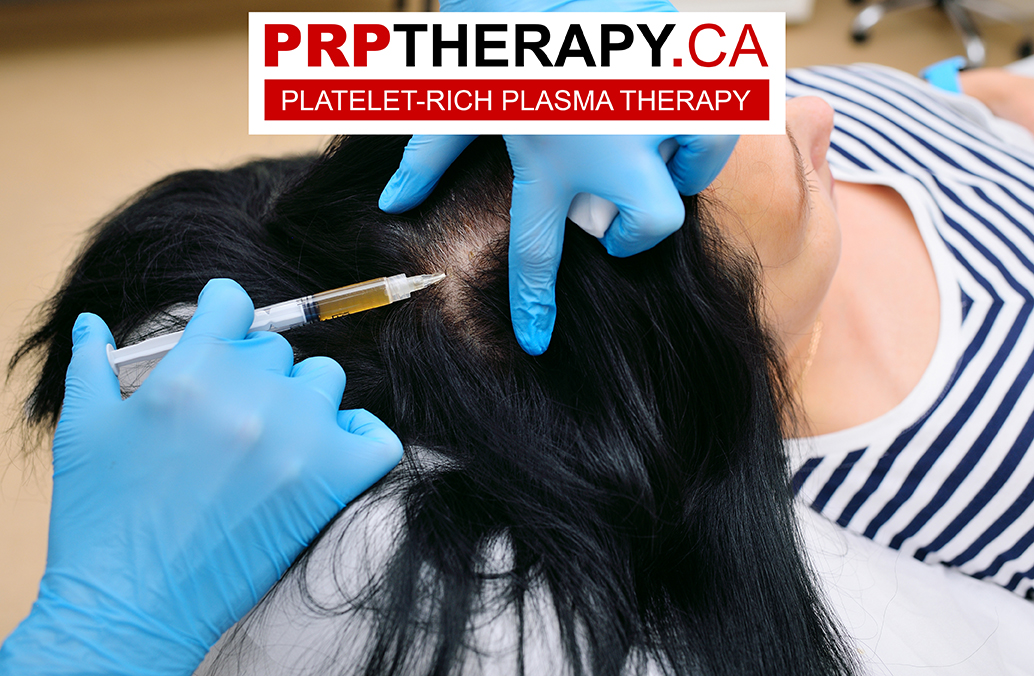
Benefits and Results of PRP Hair Treatment
Immediate and Long-Term Benefits
Patients who undergo PRP hair treatments often report a noticeable improvement in hair thickness and volume within weeks. One of the immediate benefits is the revitalization of dormant hair follicles. Over time, the increased blood flow and the abundance of growth factors lead to stronger, healthier hair strands. Long-term benefits also include reduced hair breakage, enhanced hair texture, and increased hair density.
Real-World Testimonials and Before-and-After Comparisons
Numerous testimonials from individuals who have undergone PRP treatments and witnessed significant improvements. Many patients share their journeys through before-and-after photos, showcasing visible enhancements in hair coverage, volume, and overall scalp health. These real-world testimonials serve as motivating evidence of the procedure’s transformative power.
Duration of Results and Need for Repeat Treatments
While PRP hair treatment provides promising results, it’s not a one-time solution. The initial phase usually involves a series of treatments spread over a few months. Once the desired results are achieved, maintenance sessions, typically once or twice a year, are recommended to sustain the benefits. The exact duration of results and the frequency of follow-up treatments can vary based on individual factors, emphasizing the need for periodic consultations with a medical professional.
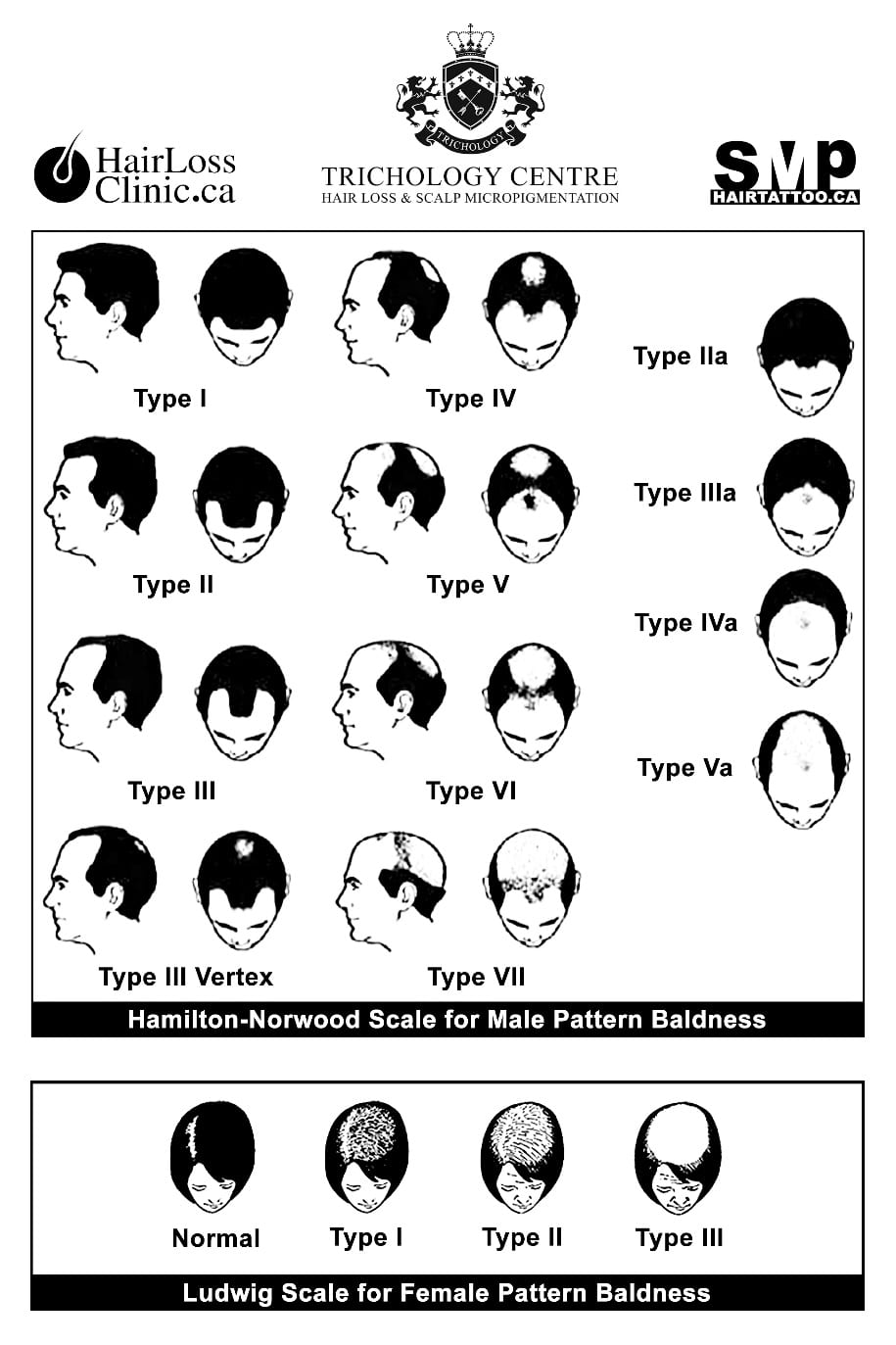
Side Effects and Safety Concerns
Common Side Effects Post-Treatment
Like any medical treatment, PRP hair therapy is not without its side effects, though most tend to be mild and temporary. Post-treatment, patients may experience:
- Redness and Swelling: Some swelling and redness around the treated areas are common due to the injection process. This usually diminishes between 24 to 48 hours.
- Tenderness or Mild Pain: Some patients report a sensation of tenderness or mild pain at the injection sites, which can last a couple of days.
- Itching: A mild itchy feeling may develop in the treated areas, possibly due to the healing response.
- Temporary Hair Shedding: Ironically, some individuals notice a slight increase in hair shedding shortly after treatment. This is typically a sign of the transition of hair follicles from a dormant state to an active growth phase, making way for new, healthier hair strands.
Addressing Potential Risks
While PRP is generally considered safe, especially since it uses the patient’s blood, thereby reducing the risk of allergic reactions or transmission of diseases, there are still some potential risks to consider:
- Infection: As with any procedure that involves injections, there’s a minimal risk of infection. However, adhering to strict sterile techniques significantly mitigates this risk.
- Nerve Damage: Though extremely rare, there’s a slight possibility of nerve damage during injection.
- Scar Tissue: There’s a minimal risk of scar tissue formation at the injection sites.
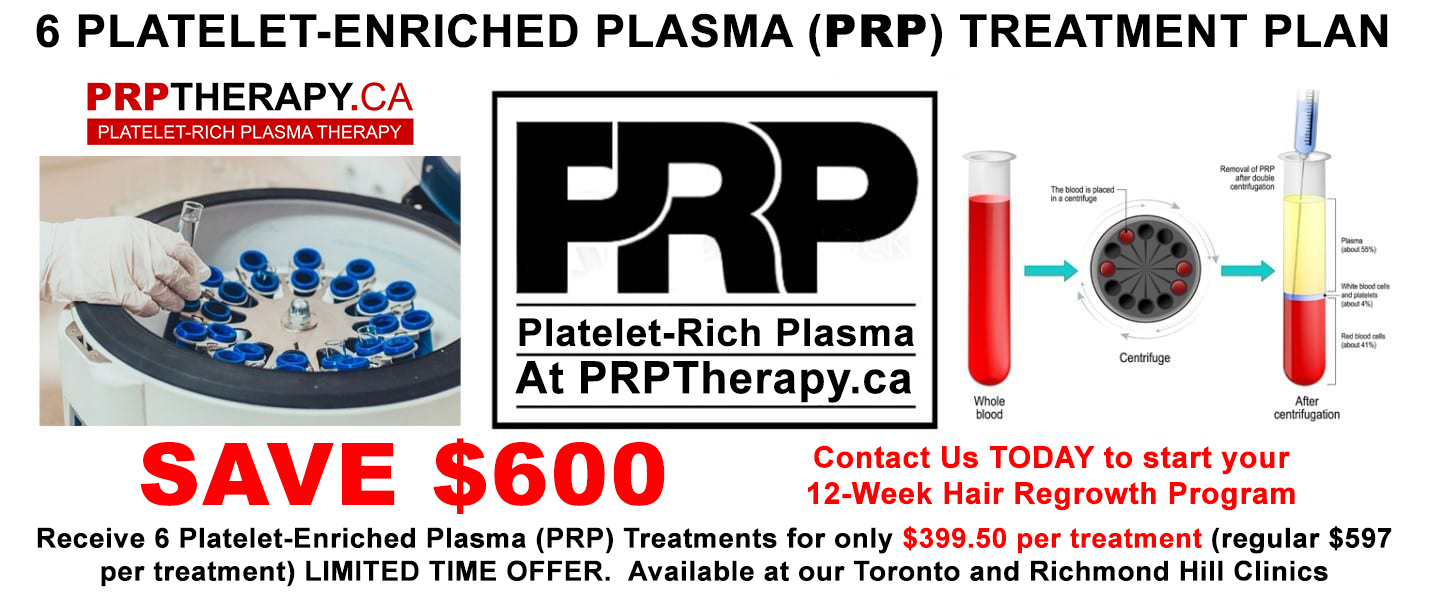
Precautions to Take Pre and Post PRP
To ensure the safety and efficacy of PRP treatments, certain precautions are advisable:
- Pre-Treatment:
- Patients must notify their doctor of any medications or supplements they use.
- It’s best to avoid blood-thinning medications and supplements like aspirin, ibuprofen, and vitamin E for a few days before treatment.
- Avoid alcohol and smoking before the treatment.
- Post-Treatment:
- Avoid washing the hair for at least 8 hours post-procedure.
- Refrain from using harsh hair products or undergoing chemical hair treatments for a week.
- Protect the scalp from direct sunlight.
Comparing PRP Hair Treatment with Other Hair Restoration Methods
PRP vs. Hair Transplants
Hair transplant procedures entail taking hair follicles from a donor site and implanting them into areas with sparse or no hair. While hair transplants provide permanent results, the process is invasive, more expensive, and involves a longer recovery period. Conversely, PRP is non-invasive and can be a good intermediary step before considering transplantation or as a complementary treatment post-transplant.
PRP vs. Topical and Oral Medications
Topical solutions like minoxidil and oral medications such as finasteride are common treatments for hair loss. While they can be effective, they often come with potential side effects, and their efficacy can wane over time. PRP offers a natural approach without the systemic side effects associated with some medications.
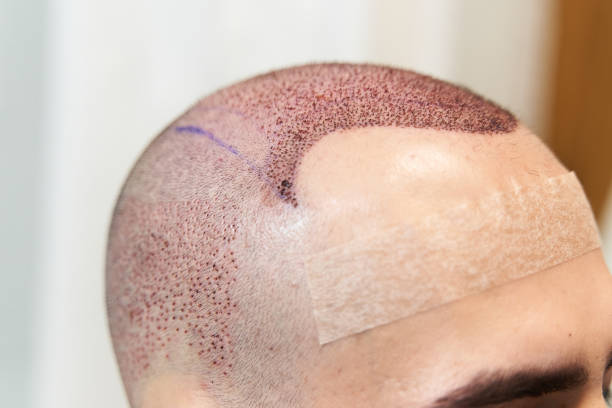
Cost-Benefit Analysis of PRP vs. Alternatives
The cost of PRP treatments can be a significant consideration for many. While PRP sessions might seem expensive initially, the cumulative cost of lifelong medications or the upfront expense and downtime of hair transplants could make PRP a cost-effective option. Additionally, the holistic benefits of PRP, like improved hair texture and health, further enhance its value proposition.
In summary, while PRP hair treatment holds promise and boasts a favourable safety profile, weighing its benefits against other treatments is essential. As with any medical decision, thorough research and consultation with trusted professionals are key to making an informed choice.
Factors Determining PRP Treatment Cost
PRP treatment costs can be influenced by a range of factors, each contributing to the overall price a patient might expect to pay:
- Geographical Location: The region or city where you receive treatment can significantly influence costs. PRP treatments might be priced higher in metropolitan areas or where the cost of living is high.
- Clinic’s Reputation: Established clinics with experienced practitioners might charge a premium, reflecting their expertise, state-of-the-art equipment, and proven track records.
- Treatment Complexity: Depending on the severity of hair loss and the treatment areas’ size, the costs might vary. Some cases require more extensive PRP preparation or additional sessions.
- Additional Therapies: Some clinics offer PRP as a part of a broader treatment package that might include complementary therapies, which can influence the total cost.
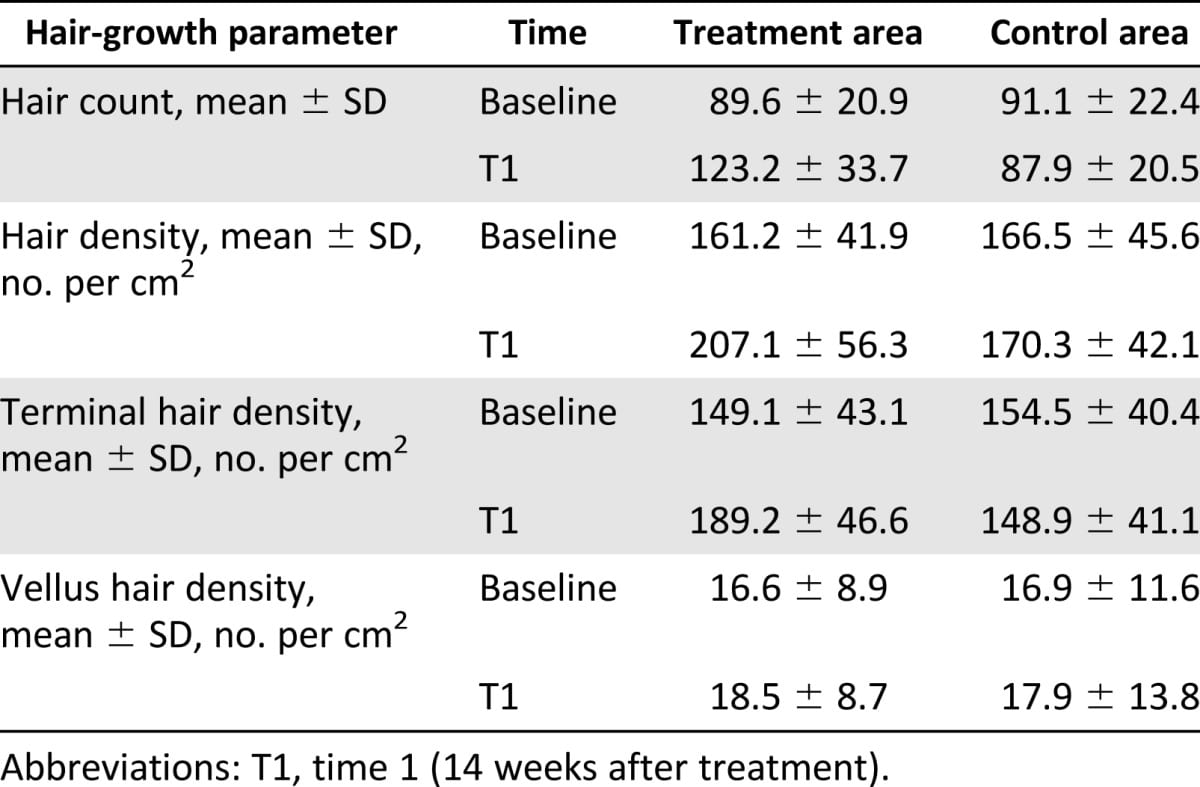
Insurance Coverage and PRP
Currently, most insurance companies categorize PRP treatment for hair loss as a ‘cosmetic’ procedure, which means it’s typically not covered. However, it’s always beneficial to check with your specific insurance provider. Some insurance plans offer partial coverage if PRP is used to treat a medically recognized condition, such as an injury. Still, its use for hair restoration should be included.
Finding Certified PRP Treatment Clinics
With the rising popularity of PRP treatments, there’s been an influx of clinics offering these services. However, to ensure safety and efficacy:
- Research Credentials: Look for clinics with certified practitioners with specific PRP treatment training.
- Read Reviews: Patient testimonials and reviews can provide insight into the clinic’s reputation and the treatments’ efficacy.
- Ask Questions: During the initial consultation, don’t hesitate to ask about the practitioner’s experience, the equipment used, and the origin of the PRP kits.
- Post-Treatment Support: A reputable clinic offers post-treatment guidance and support, ensuring comprehensive care.
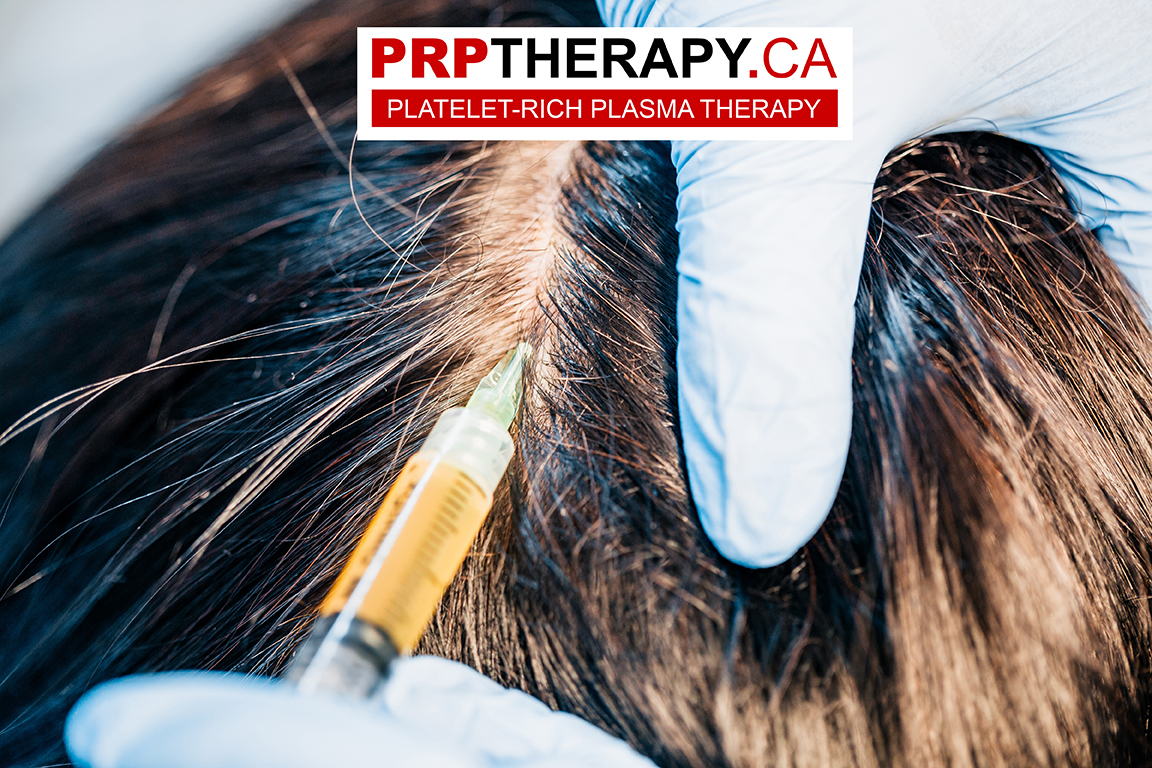
Q&A
What exactly is PRP hair loss treatment?
PRP (Platelet-Rich Plasma) hair loss treatment involves extracting a patient’s blood, concentrating the platelets, and injecting this plasma into the scalp. The growth agents in PRP are thought to activate inactive hair follicles, leading to hair rejuvenation.
How does PRP treatment differ from other hair loss treatments?
Unlike topical treatments or medications, PRP uses the patient’s blood to harness the body’s natural growth factors. It’s a more organic approach, aiming to rejuvenate hair follicles from within rather than externally.
How long does a PRP session for hair loss typically take?
A typical PRP session for hair loss usually lasts about 60-90 minutes, from blood extraction to the final injection into the scalp.
Are there any side effects associated with PRP hair loss treatment?
Some individuals might notice slight discomfort, inflammation, or a reddish hue around the injection area, but these symptoms usually fade within a couple of days.
How many PRP sessions will I need to see noticeable results?
This varies among individuals. However, many patients undergo 3-4 treatments, spaced about 4-6 weeks apart, and then maintenance sessions every 4-6 months.
Is PRP hair loss treatment suitable for everyone?
While PRP can benefit many, it’s unsuitable for everyone. Those with certain medical conditions or on specific medications may not be ideal candidates. It’s vital to speak with an expert to ascertain one’s eligibility.
Does PRP also help improve the overall quality of existing hair?
Yes, besides stimulating hair growth, PRP treatment often improves hair texture, thickness, and overall health due to the nourishing growth factors.
Is PRP treatment for hair loss a permanent solution?
PRP can significantly improve hair growth and reduce hair thinning, but maintenance sessions are typically required to sustain results. Hair loss can still progress if not continually managed.
Are there any pre-treatment precautions to take before undergoing PRP?
It’s recommended to avoid excessive sun exposure, certain medications like blood thinners, and alcohol consumption a few days before the treatment. Your healthcare provider will give detailed guidelines based on your health profile.
How soon can I return to my daily activities after a PRP session?
Most patients can resume their regular activities immediately after treatment. However, avoiding vigorous activities or direct sunlight for 24-48 hours post-treatment is best.
Conclusion: The Future of PRP Hair Treatment
The realm of PRP is not static; it’s continually evolving. Researchers are diving deep to enhance the efficacy of PRP treatments for hair loss. There’s an exploration of combining PRP with other growth factors and stem cells to amplify its effects. Additionally, innovations in PRP extraction methods aim to yield even higher concentrations of platelets, ensuring better results.
PRP hair treatment has undeniably carved a niche for itself in the world of hair restoration. Harnessing the body’s natural healing process offers a blend of science and nature. While it might not be the ‘magic bullet’ solution for everyone, its successes, minimal invasiveness, and constant innovations make it a compelling choice for many.
For individuals grappling with hair loss, PRP represents more than just a treatment; it’s a beacon of hope. As technology advances and research deepens, PRP’s future in hair restoration seems promising and indicative of an era where the line between natural and medical solutions becomes beautifully blurred.


